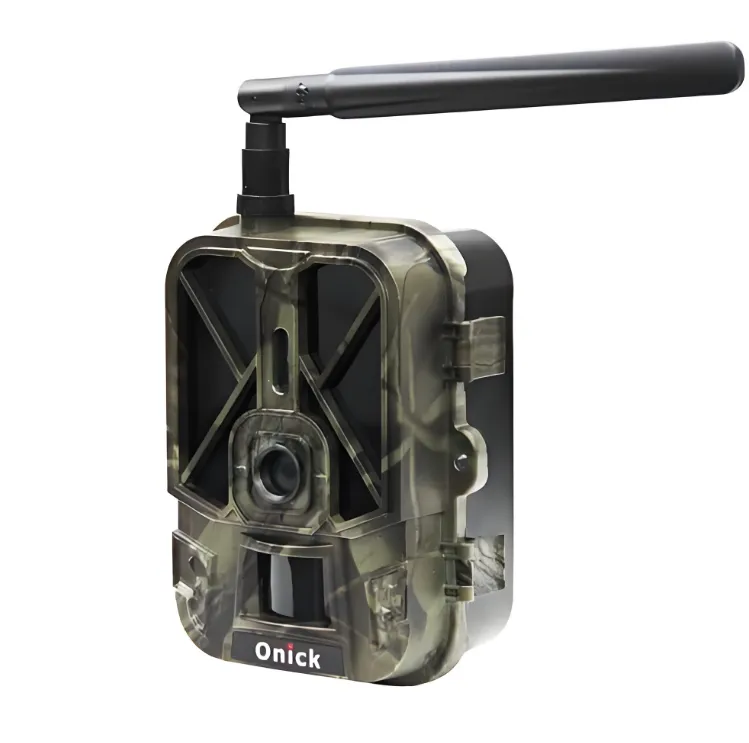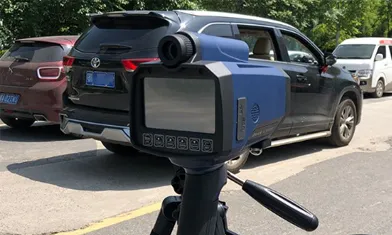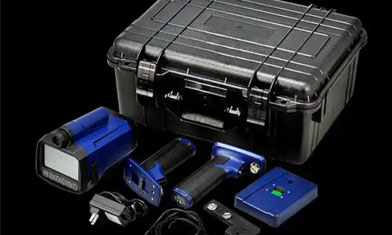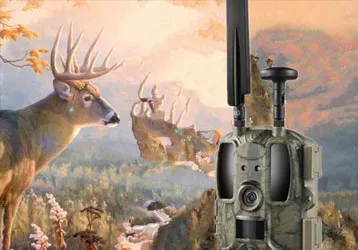WIFI version infrared selfie camera for capturing wild animals in the wild for biodiversity surveys
An infrared-triggered camera, also known as a camera trap, is an automated device used for wildlife monitoring. It uses a passive infrared sensor to detect the difference between an animal's body temperature and the surrounding temperature. When an animal passes by, the camera automatically triggers the capture of photos or videos.
How it works
1. Infrared sensor: The camera's built-in infrared sensor detects infrared radiation, which is emitted by living organisms, such as wildlife. When an animal enters the camera's sensing range, the difference between its body temperature and the surrounding temperature triggers the sensor.
2. Triggering the capture: When the sensor detects the change in infrared radiation, it sends a signal to the camera, triggering it to take a photo or video.
3. Data storage and transmission: Captured photos or videos are typically stored on the camera's built-in memory card but can also be transmitted in real time to a server or mobile app via wireless network.

The Onick AM-999G wildlife infrared monitoring camera uses a rechargeable 10,000mAh lithium battery and can capture 5,000-10,000 photos. It captures clear 36MP images and 4K videos, along with crisp audio recording. With a built-in 120° detection angle, the 4G Trail Camera sends photos to a mobile app, allowing you to capture wildlife in even the finest detail, day or night.
Using 56 infrared flashes and 940nm infrared LEDs, images are sent to your phone, providing detailed black-and-white night vision images. The 4G Trail Camera triggers instantly in 0.3 seconds, eliminating latency, ensuring you never miss a shot. Use the mobile app with the camera to capture photos or videos in real time. Image selection is made easy, and you can remotely download images without opening the camera or removing an SD card. You can also remotely connect to the camera to view the feed in real time.

Product Specifications
Model: AM-999G
Image Sensor: 12MP
App: Supports Android and iOS
Live Video Streaming in App: Yes
Transmission Mode: 4G
Memory: SD card, up to 256GB (not included)
Lens: F=3.1; Field of View = 90°
Dimensions: 155mm * 114mm * 82mm
IR Filter: Fully automatic IR filter
TFT Display: 2.4-inch
IR LEDs: Black 940nm
PIR Sensor Field of View: 120 degrees
IR LEDs: 56 LEDs
PIR Range: 25 meters
Trigger Speed: 0.3 seconds
Trigger Interval: 1/5/10/30 seconds/minute (default 1 second)
Image Resolution: 36MP/24MP/20MP/16MP/12MP
Burst Photo: 1/3/6/9
PIR Sensitivity: Low/Medium/High/OFF
Video Resolution: 4K 30fps /1080P/720P/VGA
Video Duration: 5s/10s/30s/60s/90s
File Format: JPEG/MP4
Transfer Frequency: Every/Once/Twice/Six Times/Twelve Times/Day
Timer: Select a time period
Overwrite: Off/On
Date and Time Stamp: Yes
Language: 18 languages
Exposure: Auto
Password Security: 4-digit PIN
Standby Current: 0.2mA
Standby Time: 8 months
Interfaces: Micro USB; SIM card and Micro SD card slots; 12V DC external power jack
Mounting Methods: Strap, Tripod
Operating Temperature: -30°C to +70°C
Power Supply: 10,000mAh removable lithium battery or 12V 2A DC external power supply
Waterproof: IP65
Accessories: Strap, power adapter, tweezers, card reader
Main Applications
Wildlife Population Surveys: Understand wildlife distribution, abundance, and movement patterns. Species Behavior Research: Observe and record wildlife activity patterns and social behaviors.
Reserve Patrol: Assist rangers in monitoring wildlife, particularly rare and endangered species, to promptly detect and address poaching and habitat destruction.
Human Activity Monitoring: Understand the impact of human activities on wildlife habitats and behaviors.
Technological Development:
Early Applications: Infrared-triggered cameras were initially used for tracking specific species and observing their behavior.
Technological Advances: With the continuous development of technology, infrared-triggered cameras have become increasingly powerful, with features such as GPS positioning, 4G data transmission, and AI image recognition. They are now being deployed on a large scale in nature reserves.
Future Developments: Infrared-triggered cameras are expected to enable even more intelligent monitoring, such as real-time data transmission, remote control, and automated analysis.





















